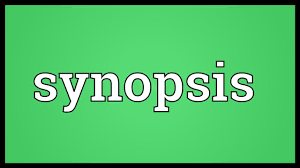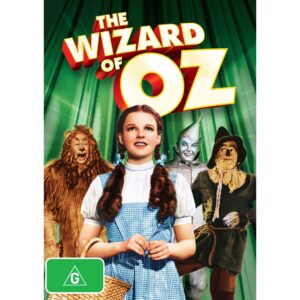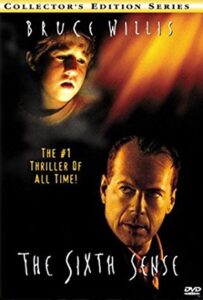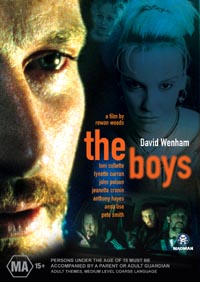Writing a Synopsis for Your Novel or Screenplay
 This fourth article in our publishing series aims to explain why the synopsis, along with the Query letter, is such an important tool when seeking representation from a literary agent or publisher.
This fourth article in our publishing series aims to explain why the synopsis, along with the Query letter, is such an important tool when seeking representation from a literary agent or publisher.
The synopsis should show agents and publishers what your novel is about in a concise, engaging fashion, enabling them to determine if they are interested in reading the full manuscript.
This article includes a process to follow when writing your synopsis, including examples to help you write a:
• One sentence synopsis
• One paragraph synopsis
• One page synopsis
Please note 1: There is no one perfect way to write a perfect synopsis. This article provides tools, not rules and includes industry guidelines and conventions designed to help you create the best synopsis you are capable of writing for your novel.
 Please note 2: The synopsis is also essential for scriptwriters and some of the information provided here is applicable for approaching producers, funding bodies and agencies.
Please note 2: The synopsis is also essential for scriptwriters and some of the information provided here is applicable for approaching producers, funding bodies and agencies.
For more targeted information, go directly to the Screen Australia website and enter Synopsis in the search field.
https://www.screenaustralia.gov.au/
What is a Synopsis?
A synopsis is an overview of your manuscript. Writing it forces you to define your story and capture its essence, conveying that you are in command of your material, in an engaging manner. It is an artform in itself.
 The quality of your synopsis will determine whether an agent or publisher will read your full manuscript. Most agents and publishers simply do not have time to read every manuscript they receive.
The quality of your synopsis will determine whether an agent or publisher will read your full manuscript. Most agents and publishers simply do not have time to read every manuscript they receive.
Fiona Inglis, from Curtis Brown Literary agency, said, ‘We always read the synopsis … and you can tell if something is worth pursuing. Like when you pick a novel. You read the back cover and then start reading.’
VERY IMPORTANT:
 Before approaching an agent or publisher, do your own homework on what they ask for in their submission guidelines.
Before approaching an agent or publisher, do your own homework on what they ask for in their submission guidelines.
Find out what length synopsis you will need to submit with your query letter. Some will require a short synopsis in the body of the query letter, while others may require a separate one-page synopsis. In addition, some may ask for the first few pages of your manuscript. You will usually find this information on their website.
As always, make sure you deliver your best work. In the publishing world, you never get a second chance to make a first impression.
Some General Key Points about the Synopsis
Synopses are on average between 500 to 700 words, single spaced, typed and should include the most important story elements that fit on a single page, while making sure that everything makes sense from a logical and emotional perspective. Publishing professional, Jane Friedman, says, ‘Don’t make the mistake of thinking the synopsis just details the plot. That will end up reading like a mechanical account of your story (or the dreaded “synopsis speak”), without depth or texture.
Publishing professional, Jane Friedman, says, ‘Don’t make the mistake of thinking the synopsis just details the plot. That will end up reading like a mechanical account of your story (or the dreaded “synopsis speak”), without depth or texture.
‘A synopsis includes the characters’ emotions and reactions to what’s happening. That will help you avoid something that reads like a mechanic’s manual. Include both story advancement (plot stuff) and colour (character stuff).’
The point of a synopsis is to give as much information as possible, while being a joy to read. Don’t deliberately leave out information, and certainly don’t omit the ending.

Please note: The general rule is that a synopsis should be written in present tense, third person, regardless of the tense/perspective of the manuscript.
Writing a Synopsis from the Ground Up
The key point of this process is to help you develop a synopsis by writing a summary of your story in the following forms:
1. A single sentence
2. A single paragraph
3. A single page
The One-Sentence Synopsis
Start by writing a one sentence summary of your story. This is known as a logline or elevator pitch. That is, you want to come up with a sentence that will capture your story in a sentence or two.
This one sentence should give the most concentrated version possible of your story, or at least, it’s key event and is essential if you have written a screenplay.
‘Your logline is a quick way to convey the key elements of your story to the reader or the listener. For agents and producers, loglines provide a means to quickly sort scripts or finished films. Would you read a book if you had absolutely no idea what that story was about?’
W. H. Bourne
 ACTION 1: Begin by asking yourself the following questions:
ACTION 1: Begin by asking yourself the following questions:
• Who is the central character? Describe them in a sentence. What makes them unique and interesting?
• Story problem. What is the primary seemingly insurmountable obstacle they face?
• What is the overall theme? Is this a tale of redemption? Loss? Coming of age? Love conquers all?
• What is at stake? What is the price of failure?
• What is the overall theme?
ACTION 2: Tell Your Story in a Sentence or Two
 Taking the above questions into account, start jotting down sentences that capture the essence of your story.
Taking the above questions into account, start jotting down sentences that capture the essence of your story.
Treat this as a brainstorming session, don’t analyse too heavily, just go with the flow until you’ve got a page of them, or the ideas just stop coming.
 Some examples from well-known stories:
Some examples from well-known stories:
After a twister transports a lonely Kansas farm girl to a magical land, she sets out on a dangerous journey to find a wizard who is the only one with the power to send her home.
The Wizard of Oz

A suicidal family man is given the opportunity to see what the world would be like if he had never been born.
It’s a Wonderful Life

A disheartened child psychologist struggles to cure a frightened, withdrawn boy who is haunted by a bizarre affliction – he sees dead people.
The Sixth Sense
After being institutionalized for a suicide attempt, a teen struggles for sanity and closure but must overcome his greatest adversary first – his mother.
Ordinary People
After learning his father was murdered, a brooding prince struggles with whether or not to kill the culprit, his uncle – the new king.
Hamlet
 A teenage girl runs away from home, hoping to find herself through love, but the people she meets are as lost as she is…
A teenage girl runs away from home, hoping to find herself through love, but the people she meets are as lost as she is…
Sommersault
This sentence is one way to describe what happens in Somersault. In this case, it gives us the starting event, implies further events and states the protagonist’s predicament. ScreenAustralia
ACTION 3:
From the above process and with the help of the examples, come up with a sentence or two that captures the essence of your story.
The One-Paragraph Synopsis
The one paragraph synopsis is useful in finding the essence of the story because it must state very briefly and simply the WHO, WHAT and HOW and how of your story.
Within the space of a few sentences, the one paragraph synopsis should set out whose story it is (the protagonist), what his or her problem is, what they do about it and the outcome.
ACTION : Consider the following:
• If you have more than one central character, who are they? You have a bit more room in a paragraph to include some quick details about the main character or group, if these details can be made relevant to the overall story and plot.
 • What is the central problem of your story and how does it escalate? What obstacles, challenges and moral dilemmas does your main character face? Why does this character or group have to proceed? Typically, if your character can back out, then you don’t have enough dramatic tension. What’s pushing them forward? Here, you’re only concerned with an overall issue. You don’t have room for individual issues.
• What is the central problem of your story and how does it escalate? What obstacles, challenges and moral dilemmas does your main character face? Why does this character or group have to proceed? Typically, if your character can back out, then you don’t have enough dramatic tension. What’s pushing them forward? Here, you’re only concerned with an overall issue. You don’t have room for individual issues.
• What is at stake?
• What is the climax of your story?
• What does the main character learn? What is the theme?
 Once again, treat this like a brainstorming session and churn out as many versions as come to you.
Once again, treat this like a brainstorming session and churn out as many versions as come to you.
1. Here is a one paragraph synopsis of the Australian film The Boys, screenplay by Steven Sewell, based on a play by Gordon Graham
 Brett Sprague is released from gaol and returns home to a family he feels has disintegrated in his absence. His attempts to dominate his brothers, his brothers’ girlfriends, his own girlfriend and his mother by violence
Brett Sprague is released from gaol and returns home to a family he feels has disintegrated in his absence. His attempts to dominate his brothers, his brothers’ girlfriends, his own girlfriend and his mother by violence
and the assertion of masculine solidarity result in the alienation and escape of the women. Finally, Brett leads his brothers in an act of revenge on one anonymous female, the scapegoat for their failures as men.
What is implied in this synopsis is not just ‘what happens, but the story’s thematic concern as well.
2. Here is a one paragraph synopsis of the Australian play and film by David Williamson, Travelling North
 Frances is a middle-aged widow, trapped in a wintry Melbourne granny flat and subject to the demands of her unhappy daughters. She escapes with her aging but passionate lover, Frank, and travels north to the idyllic Queensland coast. But Frank turns out to be an incommunicative curmudgeon, who has hidden a heart condition from her. Plagued with guilt about her daughters, Frances must nevertheless become Frank’s nurse – with the support of the local doctor and a widower neighbour. Frances breaks through the now vulnerable Frank’s shell; they find happiness at last and marry. Frank dies, and although doctor and neighbour offer themselves, Frances has found herself and is finally free: she will go on ’travelling north’.
Frances is a middle-aged widow, trapped in a wintry Melbourne granny flat and subject to the demands of her unhappy daughters. She escapes with her aging but passionate lover, Frank, and travels north to the idyllic Queensland coast. But Frank turns out to be an incommunicative curmudgeon, who has hidden a heart condition from her. Plagued with guilt about her daughters, Frances must nevertheless become Frank’s nurse – with the support of the local doctor and a widower neighbour. Frances breaks through the now vulnerable Frank’s shell; they find happiness at last and marry. Frank dies, and although doctor and neighbour offer themselves, Frances has found herself and is finally free: she will go on ’travelling north’.
The One-Page Synopsis
Here is where it’s tempting to try to fit everything in, every character, every nuance and subplot, but you will be doing yourself a disservice mentioning too many characters or events.
You don’t want to include too much detail about plot twists and turns. You don’t want to tell the entire story. What you want to do is write a book summary with enough detail about the plot to intrigue the reader or agent.
The key to a long synopsis is to put more detail about the challenges, obstacles, conflicts and resolutions. Open your bag of spoilers and clue the reader in to every important event. This means moments that lend to character arc, pace, motivations, etc. And yes, that does mean revealing the ending. Keep in mind that a synopsis for your book is not the same as the sales copy written on the back of book, which is meant to intrigue a reader or potential buyer without revealing too many plot points.
The easiest way to ensure you’ve added all you need is to first make a list of events you consider vital revelations to the story.
One good layout is a first paragraph that sets everything up at the beginning, then outline the major challenges the main character faces and then have a last paragraph that ties it all together at the end.
 ACTION: Before starting, ask yourself the following:
ACTION: Before starting, ask yourself the following:
• What does your (or each) central character want? What human need are they trying to address? This issue often feeds back into your theme, but when there are multiple characters, they may each be addressing different facets.
• What personal issues drive your (or each) central character forward? Without a constant sense of forward motion through the plot and story, your novel risks being put down and never picked back up. Even in a synopsis it’s possible to convey this drive forward with the right details and emphasis.
• What personal issues hold your (or each) central character back? This is really the first place you can make serious use of them. There is often some pain or fear that makes it hard for your protagonist(s) to press on.
• What is your central character(s)’ defining moment? At the climax, your character typically needs to change, to face down what’s holding them back and press forward against all odds. What realization or decision must your central character(s) make?
ACTION: In addition to the questions above, also consider the following:
• Beginning: How does your story open?
• Drama: What dramatic events kick off the story? Whether it be a quest, rebellion, road trip, or family intervention, the reader must know what the main character intends to do about their situation.
• What are the key events that create your main character’s journey?
• Stakes. What is at risk for the main character or those close to them? This is what drives most of the choices in your book, so you better believe the reader needs to know them.
• Climax. Where does the height of tension or action occur? What leads up to it and what follows? Keep this section clear and point-blank. Over-excessive explanation can unnecessarily lengthen your synopsis and also confuse the reader as to how the book actually progresses.
• Ending. How does your story end and how has your main character changed?
1. The Black Echo, by Michael Connelly
Homicide Detective Harry Bosch nearly dies in the “black echo” of the water tunnels beneath Los Angeles, when he discovers how FBI agents have engineered two diamond-heists and murdered his former Vietnam buddy and an innocent graffiti artist.
A frightened young graffiti artist sees a body dragged from a Jeep into a pipe and calls 911. Detective Harry Bosch responds, recognizes a fellow “tunnel rat” from Vietnam, William Meadows, and finds evidence for Meadows’ involvement in an unsolved bank robbery. Bosch takes this to the FBI, confident they can help one another but gets nowhere with Special Agent Wish. Her boss, John Rourke, lodges a complaint with IAD, which still holds a grudge against Bosch for refusing to be part of the “Family.”
 Day 2 finds IAD’s Lewis and Clarke confident they will get Bosch suspended by the end of the day, so he uses his remaining time to determine the eyewitness’s identity. Sharkey and his crew are violent muggers of gay men, but not knowing this, Bosch feels sympathy for a kid with a terrible home life. The FBI drops its complaint, but IAD continues its tail. Day 3 finds Wish distracting Bosch, Bosch and Rourke in a testosterone contest and Bosch and Wish tangling over hypnotizing Sharkey to extract details. Wish drops by Bosch’s house late at night to make up.
Day 2 finds IAD’s Lewis and Clarke confident they will get Bosch suspended by the end of the day, so he uses his remaining time to determine the eyewitness’s identity. Sharkey and his crew are violent muggers of gay men, but not knowing this, Bosch feels sympathy for a kid with a terrible home life. The FBI drops its complaint, but IAD continues its tail. Day 3 finds Wish distracting Bosch, Bosch and Rourke in a testosterone contest and Bosch and Wish tangling over hypnotizing Sharkey to extract details. Wish drops by Bosch’s house late at night to make up.
Day 4 sees Bosch and Wish visiting a halfway house, which yield leads to Meadows’ possible accomplices and murderers. While Bosch and Wish sleep together, Sharkey picks up an ominous stranger. Day 5 begins before dawn, with a summons to Sharkey’s murder scene. This death is so convenient that it suggests inside information. Rourke tells Bosch about the continuing IAD tail, which propels him to confront Lewis and Clarke about their illegal tap on his phone. Back together, Bosch and Wish learn about two Vietnamese gangsters and the imminence of a second heist. Outside Wish’s apartment building, they are nearly killed by a hit-and-run driver. After they survive four hours of interrogation, Bosch and Wish go to bed.
Morning 6 begins happily but turns to conflict as Bosch hides using IAD equipment to bug Binh’s phone. They capture the number he dials, track down Tran in Little Saigon, follow him to the Beverly Hills, watch him transfer his diamonds to a briefcase and disappear. Rourke dictates how they will deal with the tunnellers. Bosch is suspicious that everything is falling into place so smoothly, and Wish is troubled by the drive-by and her brother’s death in Vietnam. She reveals that a visit to the memorial makes her desire justice. As morning 7 dawns following an all-night vigil, Bosch determines that Rourke is behind the robberies. The ambitious IAD tails charge in and die in a hail of bullets. Bosch lives up to his reputation as a lone cowboy – and faces his greatest fear – by plunging into the black echo. Shot and going into shock, Bosch sees Rourke killed by Wish.
Wish visits Bosch on Day 8, in the hospital, after IAD finishes his grilling and threatens to fire him if he talks to the press. Bosch is sad that Wish plans to quit the FBI. Troubled, he sneaks out of the hospital and to the station, where, listening to Sharkey’s tape, puts together the pieces. After Meadows’ Memorial Day funeral – and after providing a reporter enough information to report the truth using anonymous sources – Bosch confronts Wish, learns how and why she has masterminded everything (except the murders) and suggests she turn herself in. When she does, she mails the Hopper print with which they both identify – as loners in deep shadows.
2. Cinderella
 Here is a synopsis written by literary agent Janet Reid, who has written up a brief breakdown of the classic Cinderella tale. While not technically a novel, she wanted to demonstrate with a story we all know, the kind of language and sentence structure a literary agent and/or publisher will look for when going over your synopsis. However, do not include in your writing the details in parenthesis.
Here is a synopsis written by literary agent Janet Reid, who has written up a brief breakdown of the classic Cinderella tale. While not technically a novel, she wanted to demonstrate with a story we all know, the kind of language and sentence structure a literary agent and/or publisher will look for when going over your synopsis. However, do not include in your writing the details in parenthesis.
Long ago, Cinderella lives with her parents, who love her. Her mother dies, and her father
marries a jealous lady with two beastly daughters. [set-up]
When her father then dies, Cinderella’s stepmother and stepsisters treat her as a slave. She’s moved to an attic bedroom and her only friends are the mice. Her home falls into disrepair because the family has little money left. She dreams one day someone will love her again. [inciting incident and desire]
Meanwhile, the king wants his son to be married so he can see his grandchildren before he
dies. The king decrees a royal ball, with every eligible maiden in the kingdom required to
attend. [first plot point]
Everyone is excited. Cinderella, with the help of her mouse friends, re-makes her mother’s old gown into a beautiful dress. But her stepmother and stepsisters destroy the dress so she
won’t be able to attend. Cinderella runs out into the garden and weeps. [mid-point]
Her fairy godmother appears and makes her a magical dress, complete with glass slippers
and a coach. Cinderella attends the royal ball and dances with the prince. They fall in love. At the stroke of midnight, she dashes away before the spell is broken. One glass slipper falls off, but she arrives home with the other one, which she hides. [third plot point]
The heartbroken prince travels the kingdom to determine which lady fits the glass slipper.
Her stepmother locks Cinderella in the attic (black moment] but her mouse friends help her
escape [climax].
The glass slipper fits her, and Cinderella and the prince live happily ever after. (resolution]
To Sum Up – Synopsis Do’s and Don’ts
• Narrative Arc. A synopsis conveys the narrative arc, an explanation of the problem or plot, the characters, and how the story ends. It ensures character actions and motivations are realistic, make logical sense, create micro-tension, moral dilemmas, rising conflict, rising stakes and lead to a satisfying conclusion. It summarises what happens and who changes from the beginning to the end of the story. It gives agents a good and reliable preview of your writing skills and your understanding of story.
• Narrative Voice. The general rule is that a synopsis should be written in present tense, third person, regardless of the tense/perspective of the manuscript. However, this doesn’t apply to a synopsis for a memoir, which should be written in past tense, first person, just like the memoir itself.
• Active Voice. Write your synopsis in a voice that shines and reflects the style of your novel. If you write in a sassy voice, use that same sassy voice in your synopsis. If your book is funny, use humour in your synopsis.
• Make Your Words Work. Synopses are on average between 500 to 700 words, single spaced and typed so pick active verbs and play with your sentences over and over until they are short, snappy, to the point, saying more with every draft.
Remember, less is more. Leave out any attempts to impress through poetic description. You can’t take the time to show everything in your synopsis. Often you have to “tell,” and sometimes this is confusing to writers who’ve been told for years to “show don’t tell.” For example, it’s OK to just come out and say your main character is a “hopeless romantic” rather than trying to show it.
• Unique Point of View. Have elements that set your story apart from other things they have seen.
• Story Advancement. A synopsis should include the characters’ feelings and emotions when applicable. Use these elements to advance your plot and story.
• Don’t spend time explaining or deconstructing your story’s meaning or themes. This can be a particularly persistent problem with memoir. A synopsis tells the story, but it doesn’t try to offer an interpretation, e.g., saying something like, “This is the story of how many ordinary people like me tried to make a difference.”
• Avoid talking about the story construction. This is where you add things that describe the book’s structure, such as “in the climax of the novel,” or “in a series of tense scenes.”
• Avoid character backstory unless it’s tied to the character’s motivations and desires throughout the book. A phrase or two is plenty to indicate a character’s background; ideally, you should reference it when it affects how events unfold. If you’ve written a story with flashbacks, you probably won’t include much, if any, of that in the synopsis. The last three points sourced from Jane Friedman.
• Finally, write your synopsis, then close the file for a few days. Just like your novel draft, a synopsis needs time to breathe. After giving it a break, you’ll see mistakes, new opportunities and room for improvement.
Good luck and have fun with it!





